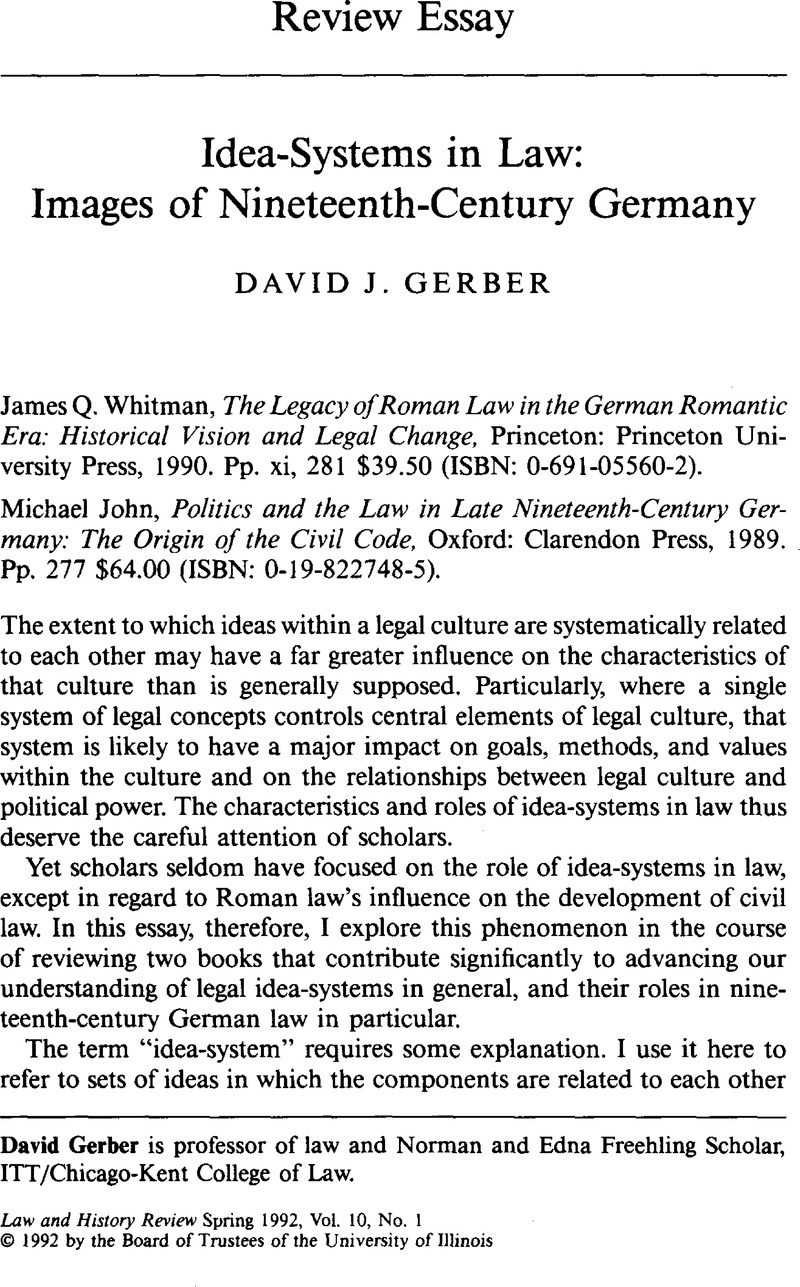Article contents
Idea-Systems in Law: Images of Nineteenth-Century Germany - James Q. Whitman, The Legacy of Roman Law in the German Romantic Era: Historical Vision and Legal Change, Princeton: Princeton University Press, 1990. Pp. xi, 281 $39.50 (ISBN: 0-691-05560-2). - Michael John, Politics and the Law in Late Nineteenth-Century Germany: The Origin of the Civil Code, Oxford: Clarendon Press, 1989. Pp. 277 $64.00 (ISBN: 0-19-822748-5).
Published online by Cambridge University Press: 28 October 2011
Abstract

- Type
- Review Essay
- Information
- Copyright
- Copyright © the American Society for Legal History, Inc. 1992
References
1. See Koschaker, Paul, Europa und das Römische Recht (Munich, 1947).Google Scholar
2. During this evolution, Roman law was restructured in accordance with the systematization schemes of natural law, and even its content was frequently altered, so that the Roman law of the nineteenth century often was far different from that of the sixteenth century, not to mention the Roman law of antiquity.
3. See, for example, Watson, Alan, The Making of the Civil Law (Cambridge, Mass., 1981).Google Scholar
4. Whitman's principal concern is not to describe the doctrinal content of Roman law, although he sometimes provides such descriptions to clarify more general points about the roles of Roman law. When he does, he does so with impressive depth.
5. I suspect that this cognitive factor is critical to his penetration of the material and his ability to perceive the interaction between the intellectual and political components of his story.
6. The code remained necessary for national unity, although “unity” now referred primarily to protecting the social fabric against disintegration in the face of socialism and other forms of populist agitation rather than to the original issue of holding the various geographical entities of the Reich together.
7. For the concept of a “grammar of law,” see Damaska, Mirjan R., “A Continental Lawyer in an American Law School: Trials and Tribulations of Adjustment,” University of Pennsylvania Law Review 116 (1968): 1363–78.CrossRefGoogle Scholar
8. Few who have had extensive experience with both German and American lawyers would deny, for example, that the legal discourse of German lawyers tends to be far more abstract than that of American lawyers. This difference is due, at least in part, to the abstract system of the German Civil Code and to the absence of an analogous system in the United States.
9. See Gerber, David J., “Extraterritorial Discovery and the Conflict of Procedural Systems” American Journal of Comparative Law 34 (1986): 745–88.CrossRefGoogle Scholar
10. I suspect that the high degree of systematization in such systems is associated with many of the major differences between civil and common law jurisdictions.
11. The growing importance of theory in at least some areas of United States substantive law increases the likelihood of this type of development.
- 1
- Cited by




